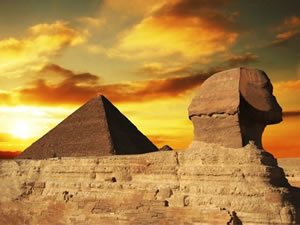Of Talismans and Timelines
This Extended Puzzle
Now for the final sequence in this magnum opus. All along, the purpose of this work has been clearly stated—to reveal a startling proof of God’s control and faithfulness. To do this, it was essential to first build a secure foundation, one that has been provided by way of investigating some of the most neglected chapters of biblical history. But considering the tremendous amount of resistance to such non-traditional rendition of said persons, we also took the time to examine the historical and scriptural validity of these freshly resurrected chapters.
In our opening analyses, we examined how certain books have been unjustly marginalized due to the stigma of their being labeled “apocryphal.” In the process of validating these stories, we saw the extent to which they can be harmonized with the canonical texts of The Bible. It was during this process that we introduced such topics as the prophecy of The Great Five and a Half Days, which we discovered would provide a central thread from which this present narrative would be woven. Next, we sought to confirm the validity of the timeline of The Great Five and a Half Day prophecy outside the realm of apocryphal literature by turning to the most famous of all megalithic monuments, The Great Pyramid of Giza. There, while investigating the way that this five and a half “day” timeline is depicted in the dimensions of The Pyramid, we uncovered a great many facts that most history books have neglected to report. It was then that we saw how The Pyramid’s prophetic chronology is uniquely mirrored in the chronology of The Septuagint Bible, which, as we discovered, actually provided the basis for the early Church’s view of a 5,500-year period from Adam to Christ. Moreover, we saw how widely held this view was by reviewing the much-neglected testimony of many of the most influential early Church Fathers and historians—men like Hippolytus of Rome, Ephrem the Syrian, and Julius Africanus.
Thus, having satisfied ourselves with locating a firm historical foundation for this 5,500-year prophetic timeline, we continued to hone in on the various ways that this numerical value of five and a half was built into the geometric design of The Great Pyramid. It was then that we were confronted with a series of uncanny numerical nuances that seemed to offer the very evidence that we were seeking.
Story Continues Below
Says Richard Price—the founder and CEO of Academia.edu—on his podcast In Depth With Academia:
The Book of Days: In Search of the 5,500-year Prophecy Given to Adam About the Coming of Christ is:
To hear Price’s book review of The Book of Days, CLICK HERE.
To hear Kent and Zen Garcia continue their discussion concerning the implications of the 5,500-year chronology from Adam to Christ as it pertains to the faithfulness of God, CLICK BELOW.
Story Continues From Above
Thus, having satisfied ourselves with locating a firm historical foundation for this 5,500-year prophetic timeline, we continued to hone in on the various ways that this numerical value of five and a half was built into the geometric design of The Great Pyramid. It was then that we were confronted with a series of uncanny numerical nuances that seemed to offer the very evidence that we were seeking.
The first thing one was struck by was the way in which the dimensions of The Pyramid’s Open Coffer in the King’s Chamber bore a striking similarity to those of The Ark of Covenant, which as it so happens was built—according to God’s instructions to Moses—using the dimensions of five and a half sacred cubits. Subsequent to discovering this dimensional relationship, pyramidologists have ever since interpreted this to mean that the Open Coffer, like The Ark itself, is a type of the Incarnation of Christ. Another way this number five and a half was located in the dimensions of The Pyramid came in the wake of researchers having determined, through various ways and means, its height to be—within a mere four inches—5,500 pyramid inches. And finally, this same numerical value was found to be incorporated in the geometry of The Great Pyramid while examining one of the potential design methods used in its construction. Known as the seked method, this particular choice of The Pyramid’s builders just happened to require the incorporation of the numerical value of five and a half sekeds—not five, not six, but five and a half, and as it turns out, using this angle of five and a half sekeds produces a pyramidal structure with the same height as the one sitting on the plateau of Giza.
Therefore, in light of this string of uncanny connections—that is, between the repeated occurrence of this number five and a half, in The Septuagint Bible, The Great Pyramid, and The Ark of the Covenant, and its obvious relation to that nearly forgotten promise of “days”—one can no longer entertain the possibility that it could all be a product of sheer coincidence. Rather, seen together as a continuum, these occurrences must be understood as one more clue in demonstrating the extent to which the God of The Bible is truly the Lord of Time. In this case, what we have is the God of Set Times, Who revealed there would be an “appointed time.” That is to say, there was a specific time period, which began when the Word of God told Adam that He would rescue him and his descendants, and which ended 5,500 years later when, “in the fullness of time,”1 that same Word put on flesh and blood, thereby “confirming all the promises of God”2 in that single act.
Having thus revealed the hidden link that connects the promise of “days” with The Septuagint Bible, The Great Pyramid of Giza, and The Ark of the Covenant, it is now time to weave two more of Christendom’s most sacred artifacts into our tapestry of talismans and timelines: The Spear of Destiny and The Shroud of Turin. Let me demonstrate how this can be done.








